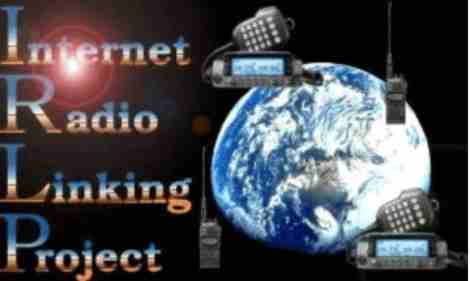

IRLP Operating Guidelines for Node 6931 – Upper Hutt, Wellington, New Zealand
By Mark Gooding – ZL2UFI
Using the Upper Hutt IRLP Node is no more difficult than using your cellphone. It may even be easier! After reading this article you should have no problems contacting nearly 1000 IRLP sites worldwide. Just dial a 4-digit code and you can speak to the world.
Initiating & ending a direct node to node call
Once you know the Node ID you want to reach, first listen for at least 10 seconds before transmitting. Assuming the node is clear, identify yourself and give an indication of what you are doing. Example: “ZL2xyz connecting on IRLP” - - then enter the four digit node code and release your PTT.
Our repeater should come up with a carrier as it waits for the connection to be authenticated. This can take a few seconds of dead-air, so don’t be concerned. When the connection is confirmed, the voice ID of the destination node will be transmitted back to you.
At the same time our node’s voice ID message is broadcast to the distant repeater.
If our node is already connected to another node or reflector, a greeting will play saying: “your node is currently connected to....” In this case, ask if anyone desires the connection to remain up. If not, disconnect by using the DISCONNECT code 73.
Once connected
After hearing the confirming voice ID, wait at least 10 seconds before transmitting.
Here’s why: The destination repeater may be in use, and your entry may have occurred between transmissions. Also, it may be that the voice ID of our node is longer than the voice ID of their node, and the connection is not made until the ID is fully played. Or their computer may be slower, and hence take longer to process the connection than ours.
Press and hold the microphone PTT for a second and then announce your presence and your intention such as you are calling someone specifically or just looking for a QSO with another ham in that city. You should repeat this one or two times to give the operators at the other end time to respond.
Here's why: Users at the destination repeater need time to hear your call, understand your callsign, and also hear your accent. They need the time to work through this, before many of them will respond. The same applies here, as many callsigns from other countries are not familiar and you need a second or two to record or remember the call. Take your time, and give the people at the other end time to respond.
If no response is heard, announce your call and your intent to drop the link and then enter the DISCONNECT code, 73.
It’s not a good idea to transmit touchtone commands without first giving your callsign. Not only is this not courteous, it is also a regulatory requirement both here and in other countries to identify your transmissions.
Some nodes are configured so you cannot connect to them if that repeater is active locally, such as the Upper Hutt node. In this case you will receive the message “The node you are calling is being used locally.” If you receive this message wait a few minutes and try again.
If you stay connected to a node and there is no activity on our repeater for 4 minutes, the connection will time-out and automatically disconnect with a voice ID disconnect message on both nodes. Example "....activity time-out, your node has been disconnected...."
Answering a call into the Upper Hutt Node
Simply wait until our repeater carrier drops, press your PTT and count to at least 2 before answering. This makes sure your first syllables are not lost, or clipped. The same applies at the end of your transmission count to 2 then release the PTT. This allows the last of your words to get through to the other node. If you don't again, the last syllables will be clipped. Not doing this can make sending and receiving callsigns a prolonged process.
If you are already connected to a node and a call comes in from another node, there will be a “call waiting” message played. You may wish to call this node back later, so note the number down.
Initiating a reflector call
This is usually the same as node-to-node calls.
Please DO NOT simply connect to a Reflector and leave the node open. It is your responsibility to CLOSE the connection, if you have finished using the Reflector.
User utility codes
66... play Universal Time
67... play Local NZ Time
73... end the current call
77... check if the node is connected or not
##xxxx ... play time and date at node XXXX e.g. ##2050
ALWAYS OPERATE IN THE SPIRIT OF THE AMATEUR'S CODE
The node and reflector IDs and locations are listed on the Internet at: www.irlp.net. That listing is sortable and printable.